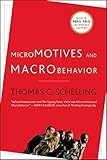Agent-based models are basically computer simulations where you throw N 'agents' into an environment with pre-defined rules and then watch how they interact with each other. This setup lends itself perfectly to vehicle-flow; each agent is a car, each car has a model for when it accelerates, when it slows down, when it turns, and so forth. Create enough of them, and you can start to simulate traffic jams and other interesting traffic phenomena.
Now, I have not studied this problem in particular. My research was on the effect of excessive lane-changing on overall traffic throughput (Spoiler: lane-changing tends to cause traffic to slow down behind the lane-changer, which means that system-wide lane-changing leads to traffic jams, but changing lanes is a strictly superior strategy for individual drivers in most situations. The classic collective-action problem. Economics!)
However, it seems to me that it would be relatively simple to extend a traditional AB traffic model to include special vehicles that impose constraints on nearby cars.
If any of you are interested, there is an excellent java library developed at UChicago called Repast [http://repast.sourceforge.net/index.html] which contains a framework for building agent-based models.
You may also be interested in my favorite book on the subject, "Micromotives and Macrobehavior" [http://www.amazon.com/Micromotives-Macrobehavior-Lectures-Pu...] which is more rigorous than its Amazon description would have you believe.
http://www.amazon.com/Micromotives-Macrobehavior-Lectures-Pu...
A similar book focused solely on online phenomena would rock.

